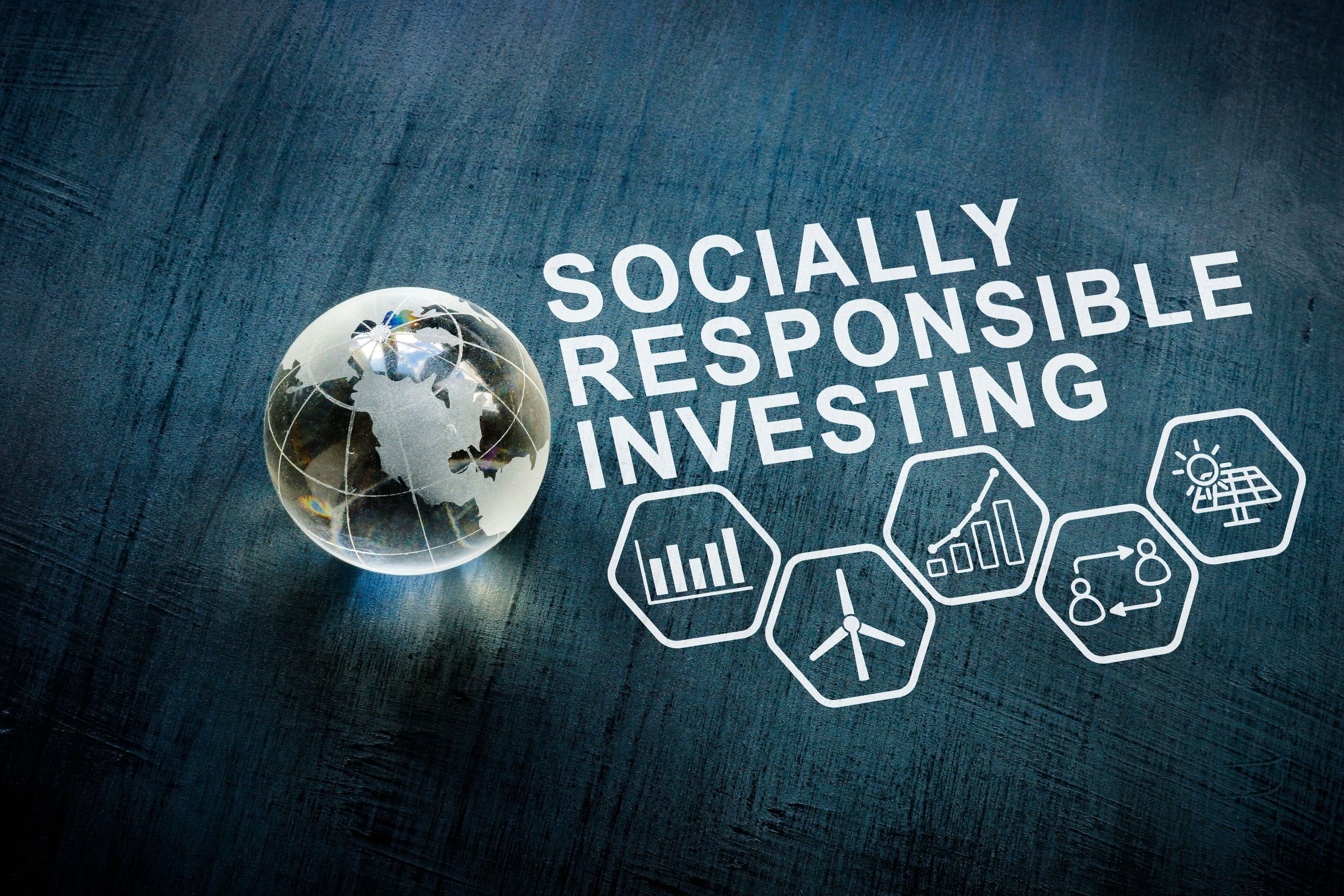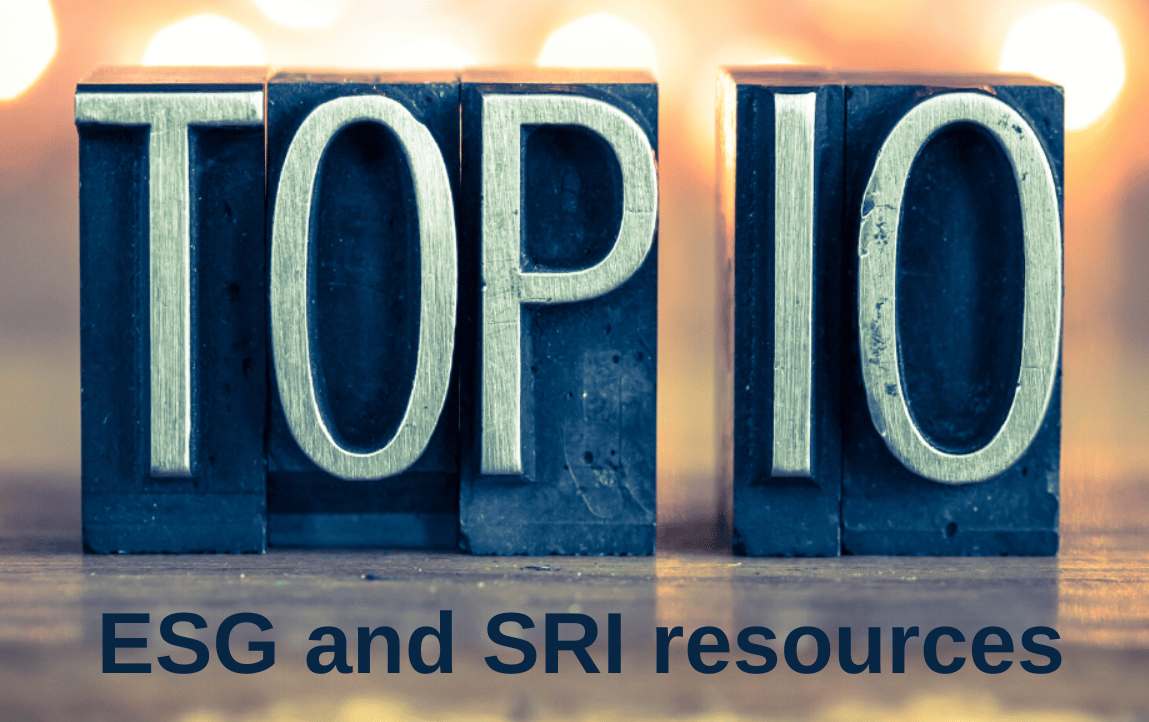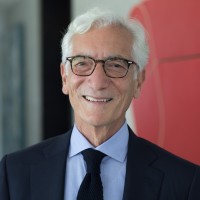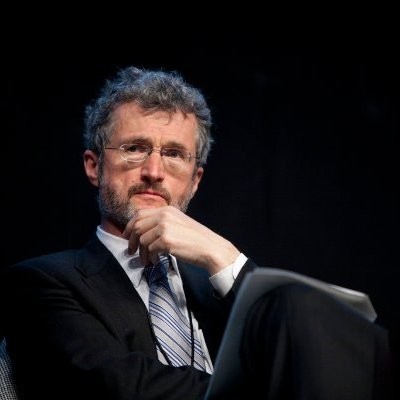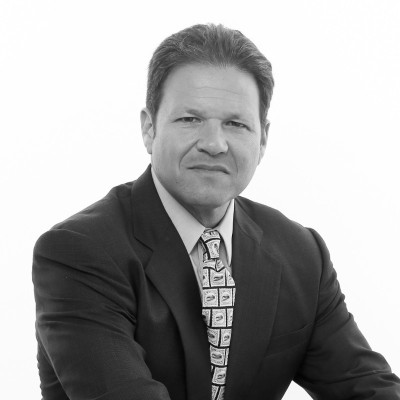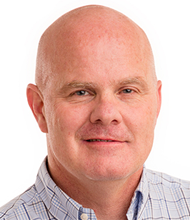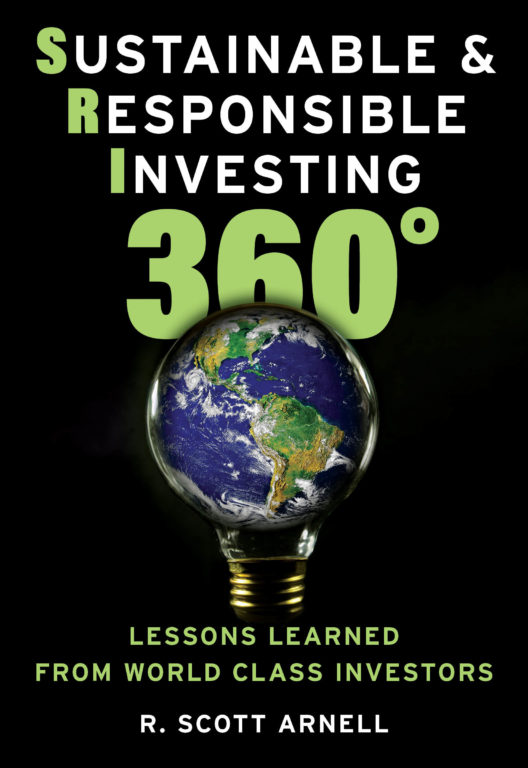
This book is a must-read for anyone wanting to know more about investing for positive social, environmental, and ethical impact with market returns – and from professional investors who are already doing it. These are the stories and tactics of those leading the way as Sustainable & Responsible Investing goes mainstream.
Recent events have exposed the disturbing inequities and injustices of today’s interdependent world. But they have also raised awareness of the powerful impact that sustainable & responsible investing can have to help remedy some of those societal, economic, and environmental challenges. I had engaging and in-depth conversations with 27 of the world’s leading Sustainable & Responsible Investment experts, who revealed their unique investment journeys, approaches, experiences, tips, strategies, and insights.
My interviewees have more than 700 years of combined professional investment experience with trillions in assets under management. Along the way, each made a personal and professional commitment to use investing as a proactive force for good. Now they reap not just financial rewards, but the profound satisfaction of knowing that they are helping improve the world and the lives of those in it.
My goal in researching and writing this book was to reveal how these experts integrate non-financial criteria into their investment decisions, to successfully achieve environmental and social impact in the world alongside market-rate financial returns. I also wanted readers to understand how the individual life journeys of these leading investors led them to commit to engaging exclusively in Sustainable & Responsible investing. My impetus for writing this book came from my own decision to do the same.
The interviewees profiled in the book hold influential positions at top financial institutions such as BlackRock, Credit Suisse, Federated Hermes, Lombard Odier & Columbia Threadneedle. They include well-known and respected experts like Marisa Drew (Credit Suisse), Eric Rice (BlackRock), Daniel Klier (Arabesque), Jean-Philippe de Schrevel (Bamboo Capital), and Matt Patsky (Trillium Asset Management). Although there is little agreement on practical application, this book presents the diversity of approaches that can empower investors to deploy capital in a more sustainably rewarding and life-giving way.
The book is organized in easy-to-navigate stand-alone sections, by six major asset classes. Read the book front to back or turn directly to sections of particular interest. Extended interviews are also available in a conveniently archived podcast format.
I’m pleased to present the full table of contents from my book, Sustainable & Responsible Investing 360º, as well as excerpts from the Introduction, Chapter 1 and one of the interviews. If you’re interested in aligning your financial investments with your values, there’s something here for everyone
Enjoy the samples below, and please grab the book at one of these fine retailers! Barnes & Noble | Amazon | Apple iBooks | Books-A-Million | Indigo and more.
Table of Contents
How Did We Get Here?
Introduction
Complementary SRI Self-Assessment Guide
1 Why Sustainable and Responsible Investing?
Jed Emerson—The Evolution of Impact, Tiedemann Advisors
2 Why SRI Is a Future-Proof Trend
Marisa Drew— Sustainable Investing, Credit Suisse
3 Aligning Investment Portfolios with SRI Values
4 Public Equities
Eric Rice—Fundamental Impact Investing, BlackRock
Matt Patsky—Global Public Equities, Trillium Asset Management
Alina Donets—Natural Capital, Lombard Odier Investment Managers
Daniel Klier—Quantitative Sustainable Investing, The Arabesque Group
5 Fixed Income
Bram Bos—Green Bonds, NN Investment Partners
Mark Dowding—ESG Fixed Income Investing, BlueBay Asset Management
Mitch Reznick—Sustainable Fixed Income, Federated Hermes
Patrick Drum—Islamic Finance, Saturna Capital
Simon Bond—Social Impact Investing, Columbia Threadneedle Investments
6 Alternatives: Private Equity
Jean-Philippe de Schrevel—Emerging & Frontier Markets Impact Investing—Bamboo Capital Partners
Stewart Langdon—Emerging Markets Impact Investing, LeapFrog Investments
Stefano Bacci—Environmental Sustainability SME Investing, Ambienta
Ron Gonen—Circular Economy Investing, Closed Loop Partners
7 Alternatives: Private Debt
Ben Rick—Social Impact Investing, Social and Sustainable Capital
Philipp Mueller—MicroFinance, BlueOrchard Finance Ltd.
Jennifer Pryce—Community Investment, Calvert Impact Capital
8 Alternatives: Venture Capital
Sharon Vosmek—Women-Led Venture Capital, Astia
Amy Novogratz—Sustainable Aquaculture Venture Capital, Aqua-Spark
Tammy Newmark—Latin American Nature-Positive Biodiversity Fund, EcoEnterprises Fund
Peter Arensman—Sustainable Agriculture Venture Capital, Future Food Fund
9 Real Assets
Dave Chen—Sustainability Driven Real Asset Investing, Equilibrium
Basil Demeroutis—Sustainable Real Estate Investing, FORE Partnership
Radha Kuppalli—Sustainable Forestry Investing, New Forests
Micah Schulz—Connected Community Real Estate Investing, Lendlease Group
10 Some Closing Thoughts
11 Short Lessons Learned—My Closing Questions
12 What Is the Single Most Important Challenge in SRI Right Now?
13 What Do You Know Now That You Wish You Knew When You Started in SRI?
14 What’s a Lesson Learned from an Investment That “Ticked All of the Boxes” but Didn’t Work Out?
15 What’s a Lesson Learned from an Investment You Were Skeptical of That Did Work Out?
16 If Someone Wants to Get into SRI, Where Should They Start?
17 Extended Conversations
Back to Top
Sustainable & Responsible Investing 360º is available at Barnes & Noble | Amazon | Apple iBooks | Books-A-Million | Indigo, and more.
EXCERPT FROM THE INTRODUCTION TO: SUSTAINABLE & RESPONSIBLE INVESTING 360º
When I was first approached to write this book, my initial thought was, “Does the world really need another book on investing? Is there anything really new to say?” As it turns out, because of the evolutionary state of sustainable investing and the relative naissance of that market, there is plenty to be said that’s new. But I’m not the person to say it. I’ll leave that to the qualified experts and brilliant innovators who are out there every day charting new waters and blazing new trails.
My goal with this book is to create a set of virtual advisors for anyone attempting this journey. To the extent that’s it’s possible, I also want to shed light upon and democratize responsible investing. I want to share tactics and solutions that were previously only used by professional investors with extensive experience and great resources at their disposal.
Inevitably, the journey to sustainable investing is different for each investor. But I hope you will find principles here that will help you more clearly define your road map to execution. Ultimately, my objective is to empower individual as well as professional investors to deploy capital in a more sustainably life-giving way.
I am not writing this book as any kind of thought leader or self-anointed expert. If I have learned anything that has allowed me to have any success in my career, it’s how much there is that I don’t know. I don’t have the answers, but I do have plenty of questions, and I took the opportunity to ask them of professionals with years of experience in this arena. They’ve pushed themselves, experimented, tried, failed, grown, and ultimately succeeded. Not all of their insights will be applicable to your particular situation. But perhaps some principles or nuggets of wisdom from their journey will help you along the path of yours.
These days there is much fanfare and bluster around sustainable investing. But in the end, it’s the people who are mobilizing capital into worthy investments that are changing the world for the better. Clarifying your values and finding your true purpose in life is a worthy achievement. If you can then align those with your financial investments, it will allow you to not just embrace those ideals, but live them on a daily basis—while positively impacting the rest of the world, for generations to come.
My intention was to create this book in easy-to-navigate stand-alone sections. You can consume it from beginning to end or turn to a specific topic of interest. The first part of the book offers a basic overview of Socially Responsible and Sustainable Investing. There you’ll find selected definitions used throughout the book, and a high-level summary of the advantages and challenges of different investment approaches.
The remainder of the book is devoted to interviews with different professional investors, and those are presented in sections organized by various types of investment focus and investor class. Each interview is intended to be a conversation with someone who has proven their know-how, has plowed new ground, and can explain the why behind their investment approach.
By sharing their knowledge and experiences through accessible and thought-provoking dialogue, these investors and company leaders can benefit both new investors and seasoned professionals looking to expand their investment horizons. Together they offer a collective vision for building sustainable profits, while creating better communities throughout the world.
Back to Top
###
Sustainable & Responsible Investing 360º is available at Barnes & Noble | Amazon | Apple iBooks | Books-A-Million | Indigo, and more.
EXCERPT FROM CHAPTER 1: SUSTAINABLE & RESPONSIBLE INVESTING 360º
“I DON’T HAVE TO TELL YOU THINGS ARE BAD . . .”
“I don’t have to tell you things are bad. Everybody knows things are bad. We know the air is unfit to breathe and our food is unfit to eat, and we sit watching our TVs while some local newscaster tells us that today we had fifteen homicides and sixty-three violent crimes—as if that’s the way it’s supposed to be.”
That’s an excerpt from the on-air rant of fictional, low-ratings national TV news anchor Howard Beale. He’s wonderfully portrayed by actor Peter Finch in the 1976 movie Network.
Ignoring the teleprompter, Beale blurts out all of his frustrations about the world he lives in, before shouting, “I’m as mad as hell and I’m not going to take this anymore!” He then urges all viewers to open their windows and do the same. Although his lines were scripted nearly half a century ago, they still ring true and seem more relevant today than ever before.
Maybe that’s because what’s now percolating to the surface has been simmering for a long, long time. The challenges we face didn’t arrive overnight. But often the problem in mounting meaningful change comes from the lack of shared experience. It is difficult to get people from different backgrounds and circumstances, who come from different cultures and parts of the world, to agree on how to prioritize our problems.
Whether the issues are human rights and social justice, or energy generation, climate change, and the environment, people are not all impacted by them in the same way. Many may feel that their daily lives are not at all affected by some of these issues.
Then the COVID-19 pandemic came along, dealing a global punch with a universally adverse impact felt around the world in a matter of months. Not everyone’s life was impacted by the pandemic in the same way, but everyone has been touched by it in ways that are immediate and personal. There is no single occurrence in recent history more relevant than the COVID-19 pandemic in terms of bringing home the fact that all of us, everywhere, are truly interdependent and interconnected. Regardless of color, creed, or country, nobody on the planet was exempt. COVID-19 made it clear that even seemingly distant problems from geographically far away parts of the world can have a very real and profound local impact.
The arrival of COVID-19 reminded us of serious issues many would much rather not have to think about. Who could have imagined something of this magnitude, requiring social distancing, uncomfortable and annoying face masks, constant disinfecting, and a sense that we were confined—against our will—to house arrest.
At no other point in history have we been more poignantly reminded of the inequities which still exist between countries, races, and social classes. Many white-collar workers could make a good living while safely at home, in a relatively spacious environment supported by latest communication technologies. In fact, they may have saved significant amounts of money, thanks to fewer transportation expenses. They may have had more time to spend with loved ones like spouses and children, since they no longer had to commute to and from work.
In contrast, most blue-collar positions were deemed non-essential, and they were either laid off or their place of business was forced to close, either temporarily or permanently. Those lower-income workers often lived in more congested urban areas where access to healthy amenities is limited, but the risk of contracting the virus was higher. Those who did remain employed may have been much more likely to catch COVID-19, and even die, as a result of increased exposure to others within the workplace.
The pandemic also brought into glaring focus the reality that what many people take for granted is unavailable to others. That can include the availability of everything from nearby grocery stores, pharmacies, outdoor spaces, and broadband connectivity. The disparities can be very real obstacles to success that is dependent upon such fundamentals as education, health care, and food security. Once the pandemic becomes a thing of the past, these inequalities can have a negative impact for life—on one’s earning power as well as their mental and physical well-being.
Race was another trigger topic during the pandemic. A disproportionate number of higher-risk essential worker roles are held by people of color. Communities of color already suffered higher mortality rates due to being under-resourced and subjected to other hardships.10 Abuse of police authority and excessive force was highlighted by media coverage and public protests.
COVID-19 created or amplified adverse economic and public health consequences, as those outcomes were felt throughout the world. Due to the world’s interconnectivity, the aggressive virus spread with unfettered ease. That can be attributed to interactions between human populations and interactions of humans with nature, as natural habitats are encroached upon by a growing human population and appetite for natural resources. But there is a delicate balance within the planet’s ecosystem. One result is zoonotic diseases emerging and spreading at a rate previously unimaginable. With increasing frequency, deadly viruses cross over from the animal kingdom to humankind.
Unless and until we pay proper attention to these situations and take collective steps to stymie these growing threats to public health, we can expect continued widespread socio-economic impact. If we continue to ignore these realities, we will reap the tragic, catastrophic consequences.
COVID-19 PULLED BACK THE CURTAIN
Before the COVID-19 world, there was a tendency to gauge the impact of human behavior mostly in terms of climate change. Even that is a topic of fierce debate, although there is no arguing about the existence of symptoms like rising ocean temperatures and sea levels, the increasing frequency of extreme weather events, and shortages of vital resources like fresh water and clean air. The crew of the Titanic would have only been able to see the tip of the iceberg, while the real scale of the threat loomed massively large beneath the surface. Similarly, we are only beginning to comprehend the full magnitude of the consequences we will incur if we proceed full steam ahead, without regard for environmental stewardship.
One silver lining noted during the pandemic was that due to unfortunate lockdowns that curtailed much human activity, the earth responded with surprising resiliency. Positive changes in such things as greenhouse gas emissions and depletion of the ozone were recorded.12 Damage that many climate scientists and computer models estimated would take decades to reverse was apparently healed within a matter of months.13 Nature just needed the opportunity, and our social changes under COVID-19 restrictions provided that. The healing isn’t permanent, nor is it significant in the grand scheme of things. But it does provide evidence that humankind has the power to reclaim much of what has been lost. Now climate scientists are more confident that if there’s a will, there’s a way.
The maintenance of healthy forests may be one option, versus unrelenting, systematic deforestation. Carbon dioxide emissions are reportedly at the highest levels in 650,000 years.14 The global temperature is 2.1 degrees higher than it was a little more than 100 years ago.15 Arctic ice, which we rely on for nearly 70 percent of drinking water, is literally evaporating into thin air.16 The ice sheets are losing an incredible 427 billion metric tons each year, while the sea level is rising 3.3 meters per year.17
The list of threats and causes is long and getting longer. But the time to act is short and getting shorter. If you wake up and realize your home is on fire, you may not have the luxury of going to investigate who or what is to blame. You first have to deal with the fire before it kills you, using whatever resources and strategies you have at your immediate disposal.
It seems that our first priority should be to do what we can to ensure that future generations don’t face an existential threat. Then we can take our time to retrospectively figure out who or what was to blame for today’s climate crisis.
###
Sustainable & Responsible Investing 360º is available at Barnes & Noble | Amazon | Apple iBooks | Books-A-Million | Indigo, and more.
EXCERPT FROM CHAPTER 1 INTERVIEW: JED EMERSON – MANAGING DIRECTOR & GLOBAL LEAD IMPACT INVESTING – TIEDEMANN ADVISORS
Can you explain what you mean by Total Portfolio Management?
There are a couple of different aspects. The first is a recognition that all capital has impact and all companies have impact. The issue isn’t whether you’re an impact investor or not. You are an impact investor when you deploy capital in the world that does things in the world. That’s what it’s all about.
That’s what Total Portfolio Management is about, and why I call it management and not activation. Your portfolio is already activated and it’s doing things all over the place and most of it is probably bad. But management means you have intentionality, you have strategy, you have metrics. You’re approaching the understanding of the impact your capital has in the world in a more intentional way. That’s the framing of TPM, which I think is important.
Related to that is, to my mind, that we have to understand the value we’re trying to create is itself whole and integrated and non-divisible. There is no such thing as doing well and then doing good. There’s no such thing as externalities. In traditional finance and economics, you basically say here’s the stuff we can measure and assess inside this little square. Things that are intangible, but at the same time we understand are priceless, we’re going to put outside of our calculus because we don’t have the right way to think about that. You have then, whatever it is, 350 years of people basically pretending the off-balance sheet stuff doesn’t matter.
I think what has happened in the progression of this work and conversation is that initially it did begin as a values conversation around “I don’t want to invest in tobacco, alcohol, firearms.” Then it became, well, if you can screen out bad companies, can you screen-in good companies? And so that’s what evolved in the 1980s—best in class investing. You had a lot of strategies looking for good companies in bad sectors, or just good companies. Then folks started doing the ESG piece and saying, okay, environmental, social, and governance factors are material to your ability to make money—they represent off balance sheet risk to managers and investors. And if you’re not thinking about that off balance sheet risk, then it will jeopardize your ability to optimize financial return. So, if all you care about is making money, you still have to think about this stuff. It has nothing to do with morality. It has nothing to do with anything other than the materiality question—how are these elements material to your ability to make money? Which, of course, laid the foundation for the expansion of ESG Integration.
And then [in 2008–2009] people started saying, well, guess what? The wheels have just come off. I think this is part of what happened with the financial crisis. It’s part of what happened during the pandemic, combined with the events of George Floyd’s murder and the light that was shown on racial and economic injustice. And then the pandemic’s effect of kind of pulling back the curtain and showing in stark terms the real effect of social and economic inequity, and the fact that all these so-called essential workers were being paid minimum wage and were basically viewed as though you could sacrifice them. And that people like you and I, it was okay for us to go to our second homes and just get Amazon to deliver. So, it raised a whole set of issues regarding business, ethics, investing and the type of world we wanted to be investing in. This is why I think some of this has just taken such a sharp edge now, is that people are really saying, okay, all capital has impact. All companies have impact. Can you manage that impact for positive social and environmental intentionality and with direction? Can you manage for positive net impact?
You’ve previously flagged pandemics as being a significant corporate risk before we ever knew about COVID-19, and the UN has estimated that 50 percent of GDP is dependent on nature. How can or should investors address these types of risks in the market?
We first need to acknowledge that ecosystems provide services to local communities, to cities, to all of us. And that for the most part, we have done a very, very poor job of accurately pricing those ecosystem services. We have created an economic order that allows many companies to offload their environmental costs to the Commons and not actually carry that cost as part of their price of doing business. I—and many others, have argued—many of the companies that today are thought to be very profitable would not be profitable if they had to actually carry that ecosystem rent, if you will, that they’re paying at very marginal, artificially low levels. We really need to step back and think very differently about how we price nature services, how we think about carbon taxes, how we think about cap and trade, how we think about all these issues.
If someone wants to get into the sustainable, responsible investment space, how would you advise them to do so?
I would advise a couple of things. One is start where you are. I mean, don’t get too wrapped up in the language and the terms and the labels. Anything can be viewed through an impact lens and can be managed on that basis. So, if you’re in a firm that is doing whatever type of investing, all you have to do is start asking uncomfortable questions about the practice and the process and you can become an impact investor.
I think the other part is to read. I am genuinely shocked at the number of people who have come into this space in the last twenty years who lead with their ignorance. It’s not that they’re stupid, it’s that they don’t know what they don’t know because they think this is a new idea. They think because they were successful in finance, all they’ve got to do is learn some of this terminology and they can be successful in impact.
It’s just curious to watch. And then you talk to those same people five or 10 years later, and they’re like, “Oh my God, the things I didn’t know, I can’t believe it.” Well, maybe you could have been quiet for a little bit of the first part and just listened to the field. I don’t mean listen to me. Just listen to the people who were actually doing the work. I think reading and just listening to the experience of the folks who’ve gone before can position you to make much better mistakes than they made. And that’s what it’s all about, it’s taking risk and capturing opportunity.
Back to Top
###
Sustainable & Responsible Investing 360º is available at Barnes & Noble | Amazon | Apple iBooks | Books-A-Million | Indigo, and more.

